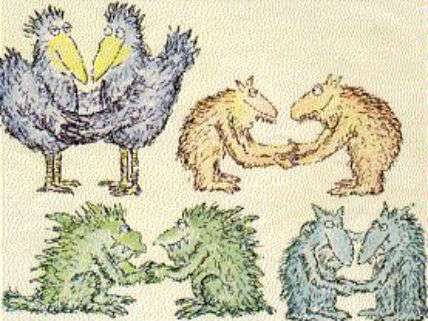Is Assortative Mating Responsible for Rising Income Inequality?
George Mason University economist Tyler Cowen suggests that it might be.

Income inequality in the United States has been rising. Various explanations have been proposed ranging from the hollowing out of the middle class as middle-skilled jobs are automated away to tax policies that favor the already rich. In his Sunday New York Times article, "The Marriages of Power Couples Reinforce Income Inequality," George Mason University economist Tyler Cowen suggests that rising income inequality is being exacerbated by the fact that highly educated people are increasingly likely to marry one another. As evidence, Cowen cites an interesting study published in 2014 that looked what would have happened to income inequality if marriage matches were still being made across the educational and income levels as they stood in 1960. From the Cowen's article:
The numbers show that assortative mating really matters. One study indicated that if the marriage patterns of 1960 were imported into 2005, the Gini coefficient for the American economy — the standard measure of income inequality — would fall to 0.34 from 0.43, a considerable drop, given that the scale runs from zero to one. That result is from the economist Jeremy Greenwood, a professor of economics at the University of Pennsylvania, and other co-authors.
Another 2015 study cited by Cowen calculated that …
… about half of the expected financial gain of attending college derived not from better job prospects but from the chance to meet and marry a higher-earning spouse.
Cowen rather coyly overlooks another aspect of the assortative mating that takes place at universities: The heritability of intelligence. Men and women now tend to look for partners who are at least as smart as they are and they tend to pass along their smarts to their children. A 2015 study reports that assortative mating correlates more with intelligence than for any other trait. The study then notes:
For example, if spouses mated randomly in relation to intelligence, highly intelligent women would be just as likely to mate with men of low as high intelligence. Offspring of the matings of women of high intelligence and men of low intelligence would generally be of average intelligence. However, because there is strong positive assortative mating, children with highly intelligent mothers are also likely to have highly intelligent fathers, and the offspring themselves are likely to be more intelligent than average. The same thing happens for less intelligent parents. In this way, assortative mating increases additive genetic variance in that the offspring differ more from the average than they would if mating were random. The increase in additive genetic variance can be substantial because its effects accumulate generation after generation until an equilibrium is reached.
Cowen concludes:
Today, we rightfully reject the idea of eugenics as repugnant, yet we are conducting our own experiments in mating, without much careful thought as to where they will lead. Match.com and Tinder help us find "just the right mate," according to our prior desires and specifications, with aid from computer algorithms. The real question may be not whether we can reverse some of the less desired effects of assortative mating, but rather just how far the practice will go.
To the extent that intelligence is correlated with socioeconomic status, assortative mating will further exacerbate trends to greater income inequality. However, future developments in genetic engineering may well provide everyone access to enhancements that will tend to decrease rather than increase any socioeconomic inequalities that associated with genetic variations.


Show Comments (87)